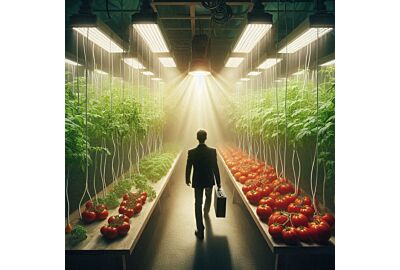HPS to LED - Making the transition
Making the Transition to the Future of Grow Lighting.
As indoor gardening continues to gain popularity as a hobby for many people who want to grow plants all year round, regardless of the weather, more and more growers are switching from traditional high-pressure sodium (HPS) lights to light-emitting diode (LED) grow lights. While HPS lights have been a standard choice for indoor gardening for many years, the recent inroads in R&D of LED chip technology and perfomance is leaving the old innefficiant HPS tech in it's wake ulitmately resulting in commercialised ops leading the way in the transition. LED grow lights offer a number of benefits that make them an attractive alternative. However, making the switch from HPS to LED requires some adjustments to your growing setup. In this blog, we’ll explore the pros and cons of using LED grow lights and the adjustments you’ll need to make when transitioning to them.
Pros of LED Grow Lights
There are many advantages to using LED grow lights over traditional HPS lights. Here are some of the most notable:
- Energy Efficiency: One of the biggest benefits of using LED grow lights is that they are highly energy-efficient. They consume up to 60% less electricity than HPS lights, which can lead to significant savings on your energy bill.
- Higher Micromol (µmol) output per watt/joule of electricity - a high quality HPS lighting kit averages around 1.4 µmol per watt whereas the current LED lighting fixtures vary between 2.3 to 2.8 µmol on average.
- Longer Lifespan: LED grow lights also have a much longer lifespan than HPS lights. While HPS lamps diminish rapidly they typically last for around a total of 10,000 hours but by this time they output an estimated 50% as when new, LED grow lights can last for up to 50,000 hours with no notable dimisihing.
- Spectrum Control: LED grow lights allow for more precise spectrum control than HPS lights, which means you can provide your plants with the exact light spectrum they need at each stage of their growth cycle.
- Lower Heat Output: HPS lights can produce a lot of heat, which can be a problem for indoor growers. LED grow lights produce much less heat, which means you can keep your grow room at a more consistent temperature without having to worry about your plants overheating.
- Reported Higher Yields & Quality produce.
- Greater flexibilty & control
Cons of LED Grow Lights
While LED grow lights have many benefits, there are also some downsides to using them. Here are a few cons to consider:
- Higher Upfront Cost: LED grow lights are generally more expensive than HPS lights, which can be a deterrent for some growers.
- Adjust Your Nutrient Solution: LED grow lights can have an impact on your plants’ nutrient uptake, so you may need to adjust your nutrient solution to ensure your plants are getting the right balance of nutrients.
- Adjust Your Temperature and Humidity: Because LED grow lights produce less heat than HPS lights, you may need to adjust your temperature and humidity levels to ensure your plants are getting the right environment.
- You will need to monitor your plants carefully when making any changes to LED's in your garden, keep an eye on the environment more, their growth & adjust your setup as needed to ensure they are getting the right amount of light, nutrients, and environmental conditions.
Conclusion
Switching from HPS to LED grow lights can be a great choice for indoor gardeners who want to save money on their energy bills and enjoy the benefits of more precise spectrum control and longer light source life. However, there are some adjustments you’ll need to make to your setup when transitioning to LED grow lights to bear in mind, including adjusting your light height, nutrient solution & temperature & Humidity reactions are different due to the decrease in heat prodcuced by the LED fixtures.
We have a diverse range of LED grow lights from all the leading brands such as: Lumatek, Dimlux, Maxibright, Lumii, Nokatech, Powerplant, Adjusta-watt & Elite If your looking to make the jump into LED grow lighting and would like advise on which unit/s would suit your needs drop in store or if your further a field simply contact us






